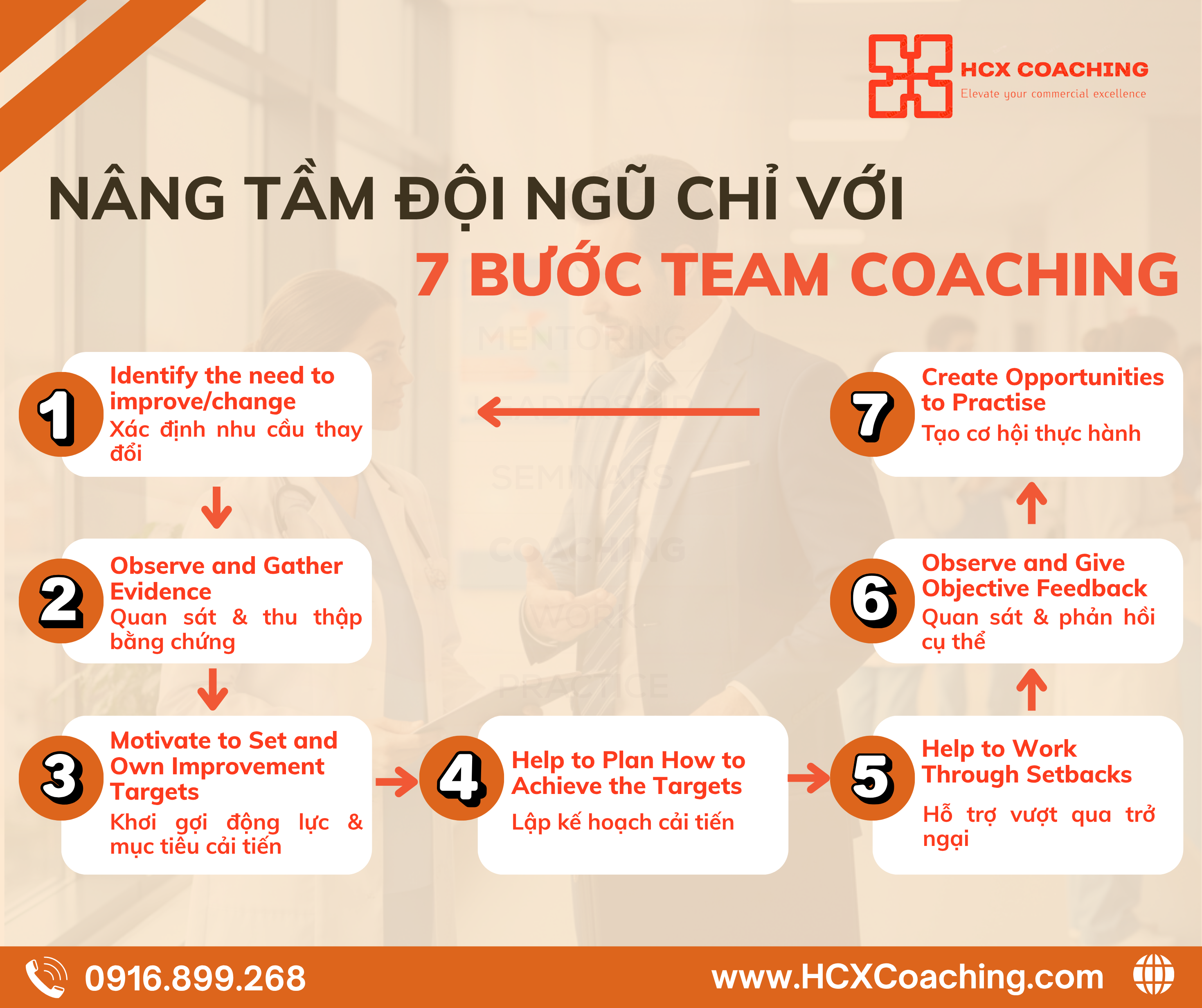Coaching: From Performance to Capability Building
Coaching: From Performance to Capability Building
Team coaching is a goal-driven coaching dialogue that happens within the team. Its purpose is to boost performance and at the same time build lasting capabilities.
Unlike mentoring or training, team coaching focuses on developing critical thinking, observation, and feedback skills, helping team members to:
-
Proactively identify problems,
-
Suggest practical solutions,
-
Adjust behaviors for real impact.
Coaching goes beyond just “doing things right” it’s about “doing the right things, the right way”. A well-designed coaching program helps the team to:
-
Understand both internal and external context,
-
Make smarter decisions,
-
Manage themselves better,
-
Adapt faster to change.
A skilled coach doesn’t just help the team “hit the numbers”—they also help them grow core capabilities to sustain performance in a constantly changing environment.
7 Steps of an Effective Team Coaching Process
Based on the model in “Coaching the Team at Work”, an effective team coaching journey follows 7 steps:
-
Identify the need to improve/change – Clarify what needs to change, whether it’s a business goal or team performance.
-
Observe and gather evidence – Watch how the team works and collect real examples to shape the problem.
-
Motivate to set and own improvement targets – Inspire the team to set and truly own meaningful improvement goals.
-
Help to plan how to achieve those targets – Co-create a clear and actionable plan.
-
Create opportunities to practice desired skills – Provide space for the team to practice and sharpen skills.
-
Observe in action and give objective feedback – Monitor progress and give fair, constructive feedback.
-
Help to work through setbacks – Support the team in overcoming challenges and regaining momentum.
Team Coaching (Performance Coaching) vs. Business Review
-
Identify the Need to Improve/Change
-
Coaching: Looks beyond business results to uncover skill, mindset, and capability gaps.
-
Business Review: Focuses mainly on targets and outcomes.
2. Observe and Gather Evidence
-
Coaching: Managers watch team behaviors, interactions, and energy—not just numbers.
-
Business Review: Data and metrics take the spotlight.
3. Motivate to Set and Own Improvement Targets
-
Coaching: Teams define goals they truly care about and take ownership of.
-
Business Review: Goals and KPIs are usually assigned top-down.
4. Help to Plan How to Achieve the Targets
-
Coaching: Conversations guide the team to design solutions, resources, and priorities together.
-
Business Review: Tasks are delegated to execute business plans.
5. Create Opportunities to Practise
-
Coaching: Simulations, role plays, and field coaching sessions to practice real skills (e.g., objection handling, patient-focused pitching).
-
Business Review: Little to no space for practice.
6. Observe and Give Objective Feedback
-
Coaching: Feedback is based on real observed behaviors in meetings or field visits.
-
Business Review: Feedback often remains general or only result-focused.
7. Help to Work Through Setbacks
-
Coaching: The coach supports the team to overcome obstacles, rebuild confidence, and redesign strategies if needed.
-
Business Review: Mostly emphasizes accountability and results.
-
Team coaching doesn’t replace Business Review it complements it. While Business Review tracks performance, coaching builds people’s capabilities. Together, they help teams not just achieve goals, but also grow in a sustainable way.

Register to download documents
